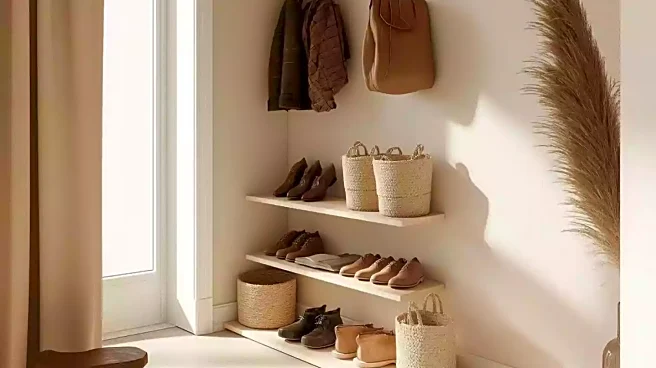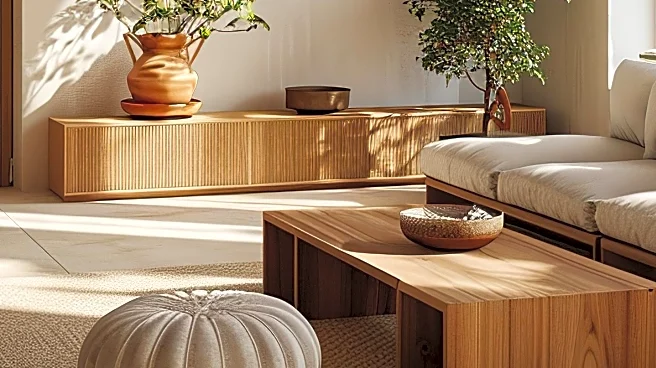What's Happening?
Luxury fashion brands are increasingly venturing into the homeware sector, recognizing the growing importance of interior design as a form of personal expression. This shift has been accelerated by the pandemic, which has made homes more central to people's lives. Fashion houses are now offering homeware products such as porcelain, wallpaper, and lighting, integrating their brand aesthetics into these items. This trend is mirrored by interior design brands adopting fashion industry strategies like seasonal collections and limited-edition collaborations. The convergence of fashion and home decor is evident in the popularity of 'tablescapes' and 'shelfies' on social media, where home interiors are showcased as part of personal branding.
Why It's Important?
The expansion of luxury brands into homeware represents a significant shift in consumer behavior and market dynamics. As consumers invest more in their living spaces, brands have an opportunity to tap into a new revenue stream that offers a sense of permanence and daily utility. This move allows brands to deepen their presence in consumers' lives, extending beyond fashion to influence lifestyle choices. However, this trend also poses risks, as the homeware sector could become oversaturated with marketing and product drops, potentially undermining the values of craftsmanship and individuality that define the home as a personal sanctuary.
What's Next?
As luxury brands continue to explore the homeware market, they may face challenges in balancing commercial interests with maintaining the authenticity and uniqueness of their offerings. Retail spaces might evolve to resemble living environments, enhancing the shopping experience by making it more immersive and personal. Additionally, brands may need to navigate consumer expectations for sustainability and ethical production in homeware, as these factors become increasingly important in purchasing decisions.
Beyond the Headlines
The integration of fashion and home decor reflects broader cultural shifts towards holistic self-expression, where personal style encompasses both clothing and living spaces. This trend highlights the blurring lines between different lifestyle sectors, suggesting a future where consumer choices are driven by a unified aesthetic vision. The potential for over-commercialization, however, raises questions about the impact on the intrinsic value of home as a space for individuality and comfort.











